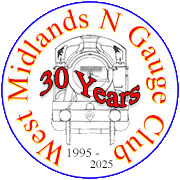top of page


20221203_164333

20221203_161446

waterstock_banner

20221203_164333
1/17
Waterstock

Waterstock is some 20ft long and comprises of 6 (4'x2') boards as the main "scenic" model with 4 (4'x1') boards for the rear "fiddle yard".
The track plan is based on an amalgam of Hatton Junction and Yeovil Pen Mill, Hatton being moved Southwards to rest between Oxford (Tiddington) and Thame, and became part of the GCR/GWR joint improvement/expansion of 1897. This saw a better/faster/shorter line
for the GWR to Birmingham and access to Marylebone avoiding the Metropolitan line for the GCR.
Where & Why - Our model presupposes that the GWR/GCR co-operation in building the Marylebone/Paddington line to the Aylesbury/ Princess Risborough area was continued in the hope that the GWR would have access to the industrial North East and that the GCR would be a huge step closer to its’ dream of connecting directly with the South Coast, and thereby the Continent.
The Oxford to Princess Risborough connecting line via Thame was to have a major part in fulfilling the aspirations of both Companies.
The Junction below Oxford was provided with a South facing connection and the line Eastward was tripled. At Waterstock the GWR line to Princess Risborough continued Eastward as a single track to Thame, while the new GCR/GWR joint line continued as a triple line to a junction with the GWR main line to Birmingham, at which connections both North and South were made with a flyover to Quainton Road (GCR).
Station Site Waterstock - The new line was a joint venture by both the GWR and the GCR who offered running rights to any company which was prepared to pay the fees. Both Companies saw this connection as an opportunity; to the GCR it was a possibility to reach the South Coast and fulfil the dream of a line to Europe, while to the GWR it was a chance to increase revenues through running rights, and an opportunity to gain access to the industrial North and its’ lucrative freight traffic.
The junction bore a similarity to Hatton on the GWR Birmingham - Paddington main-line although the station buildings were distinctly GCR and the engine shed site a passing resemblance to Yeovil Pen Mill, although the shed itself was a far more modern Churchward structure than the Brunelian wooden one at Yeovil.
Description of the New Line Constructed - The line left the Waterstock site in a cutting and passed over/ under four bridges in fairly quick succession, the A418, the Tiddington to Draycot road, the River Thame and the Shabbington to Worminghall road. Having skirted the lower regions of Waterstock and Draycot, the line passes between Ickford and Shabbington and heads North over relatively flat terrain threading its way between Westfield and Hornage Farms.
The area between Ickford and Shabbington was found to be rather wetter than expected and required additional piling/support for the low embankment which carried it over the meadow -lands.
The line then drifted slightly toward Chilton and turned Northward following the 100Mtr contour around Dorton. Thereafter crossing/joining the Princess Risborough to Bicester line just North of Ashendon Junction. It had been intended to drive the line straight along the valley floor and through the outskirts of Dorton village, but strong protests from local residents, particularly Dorton House School, ensured that the line was placed to the South of the village.
The Line enjoyed a healthy life until the demise of the "parent" line from Oxford to Princess Risborough, especially during the rebuilding / electrifying of the WCML, when the Birmingham expresses took the Paddington to Birmingham route and freight was redirected away from the WCML to anywhere that could cope with it, but with the machinations of Dr. Beeching and the drive to close anything which was not an Inter-City route, eventually it all went the way of a lot of our railway system.
Track Plan -
bottom of page


